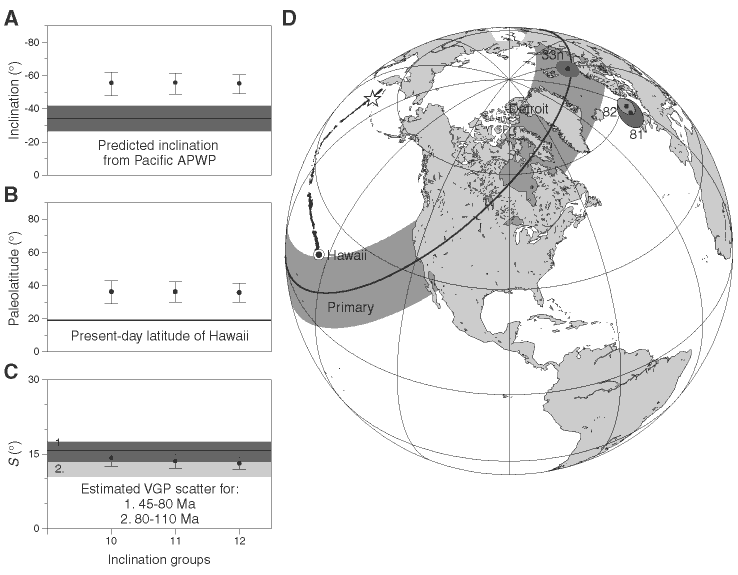
Figure F3. A.
Average inclination values for three inclination group models from Detroit
Seamount; error bars = 95% confidence intervals. The predicted inclination at 81
Ma based on prior Pacific apparent polar wander path (APWP) poles (Gordon, 1983)
is also shown. B. Paleolatitude values with 95% confidence
intervals for the inclination groups. The present-day latitude of the Hawaiian
hotspot (solid line) is also shown. C. Estimated angular
dispersion (S) of the inclination groups (solid line) vs. the predicted
values for 45-80 Ma (dark field) and 80-110 Ma (light field) from McFadden et
al. (1991). VGP = virtual geomagnetic pole. D. Orthographic
projection of the colatitude (primary) for Detroit Seamount (star). The
colatitude is distinct at the 99% confidence level (shaded) from previous 81-82
Ma poles (ellipses). Poles are derived from the following: 81 Ma (Gordon, 1983),
82 Ma (Sager and Pringle, 1988), and 33n (79.1-73.6 Ma) (Vasas et al., 1994).
The sense of offset between the natural remanent magnetization data and the
demagnetized (primary) data is the same as that between the new paleolatitude
result and results based on prior Pacific pole positions. This is the expected
effect if these previous pole positions are contaminated by secondary
magnetizations. This figure is after Tarduno and Cottrell (1997).



![]()